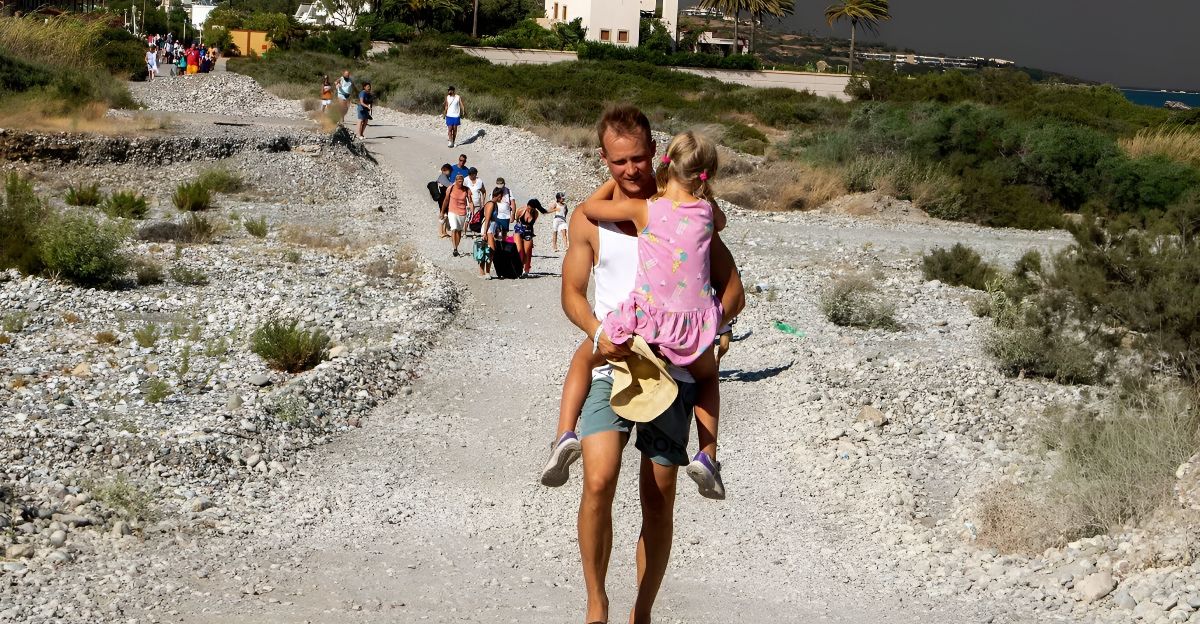
Greece is usually where sun-kissed skin, cocktails on the beach, and romantic strolls in small towns are all you take home from your holiday, but for some holiday-goers, what might have been a dream getaway turned into a blazing memory.
Ferocious flames, driven by scorching temperatures and gale-force winds, swept across the island of Crete, prompting mass evacuations from hotels, homes, and resorts. The chaos unfolded at the height of the summer holiday season, leaving vacationers scrambling for safety and locals bracing for loss.
Disaster Strikes Crete
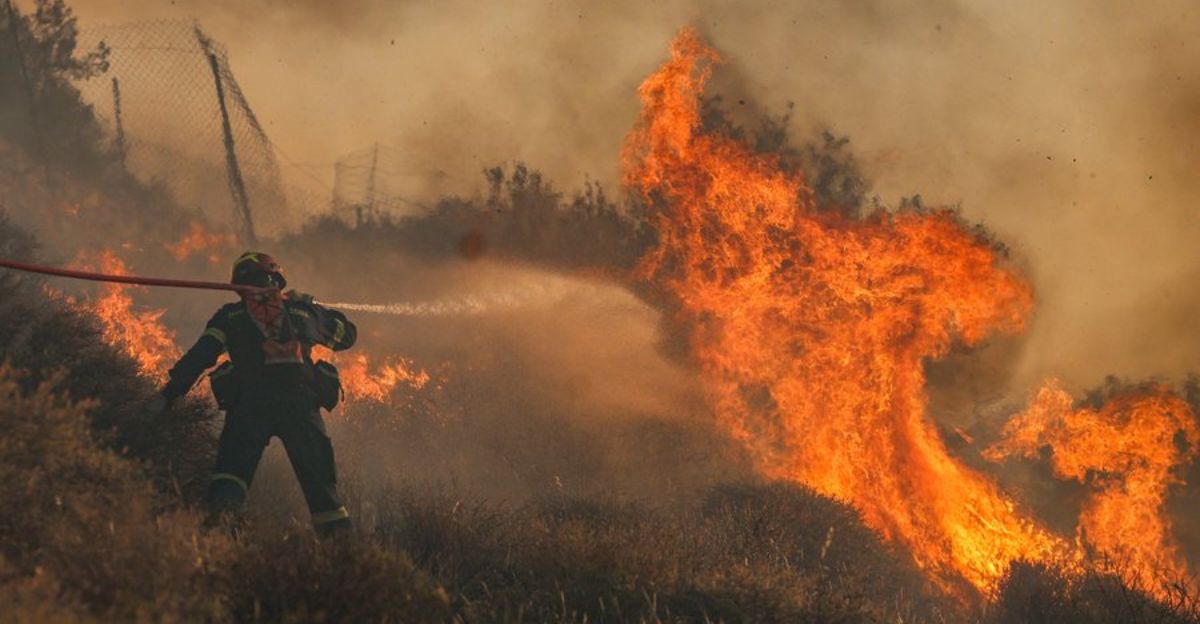
The blaze ignited on Wednesday afternoon, July 2, 2025, near Ierapetra, a region renowned for its picturesque beaches and bustling resorts. Due to scorching temperatures, parched vegetation, and gale-force winds reaching up to 50 miles per hour, the fire got out of control. The fire spread rapidly across forested hills and agricultural land, overwhelming local firefighting resources.
Within hours, thousands of residents and tourists were forced to evacuate homes, hotels, and rental properties as flames advanced through communities. “We are entering the third and most difficult month of the fire season. These conditions favor the spread of fires and increase their danger,” said Chief Vasilios Vathrakoyannis, from the Fire Department.
The Mass Evacuations
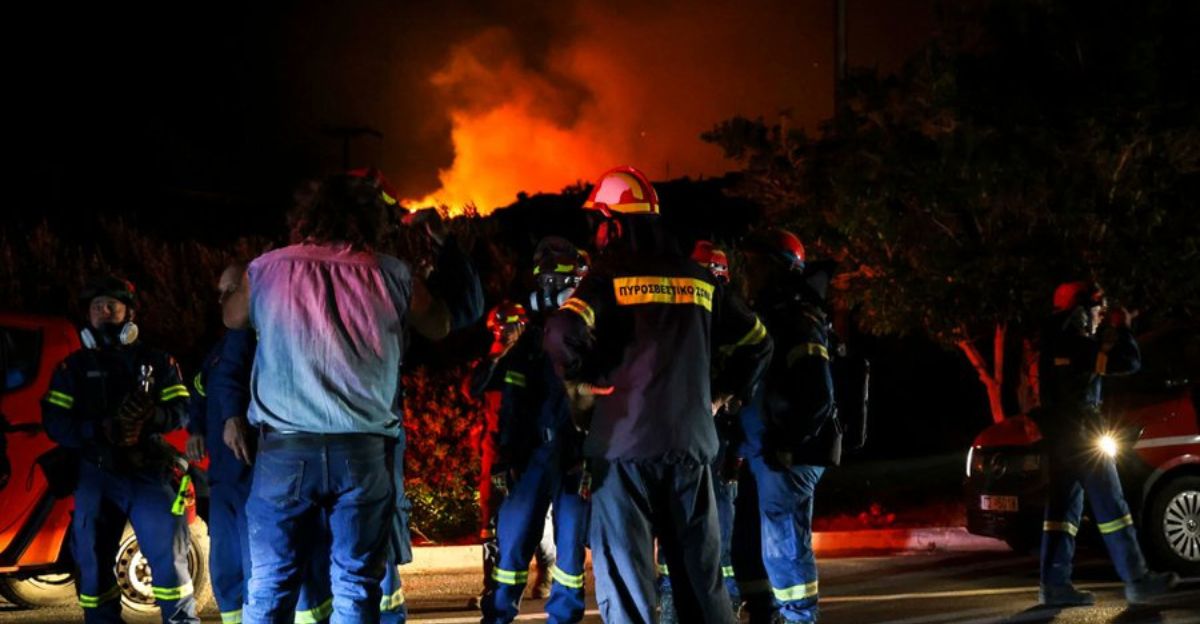
As the fire raged uncontrollably across Crete, widespread panic and fear rampaged throughout the island. Authorities issued emergency evacuation orders for thousands, including residents and international tourists, as flames approached popular coastal resorts and villages. Hotels and holiday accommodations quickly emptied, with guests grabbing essentials and boarding buses, ferries, and fishing boats to escape the advancing fire.
“It’s a very difficult situation. The fire is very hard to contain. Right now, they cannot contain it,” said Nektarios Papadakis, a regional civil protection official.
Local Emergency Response
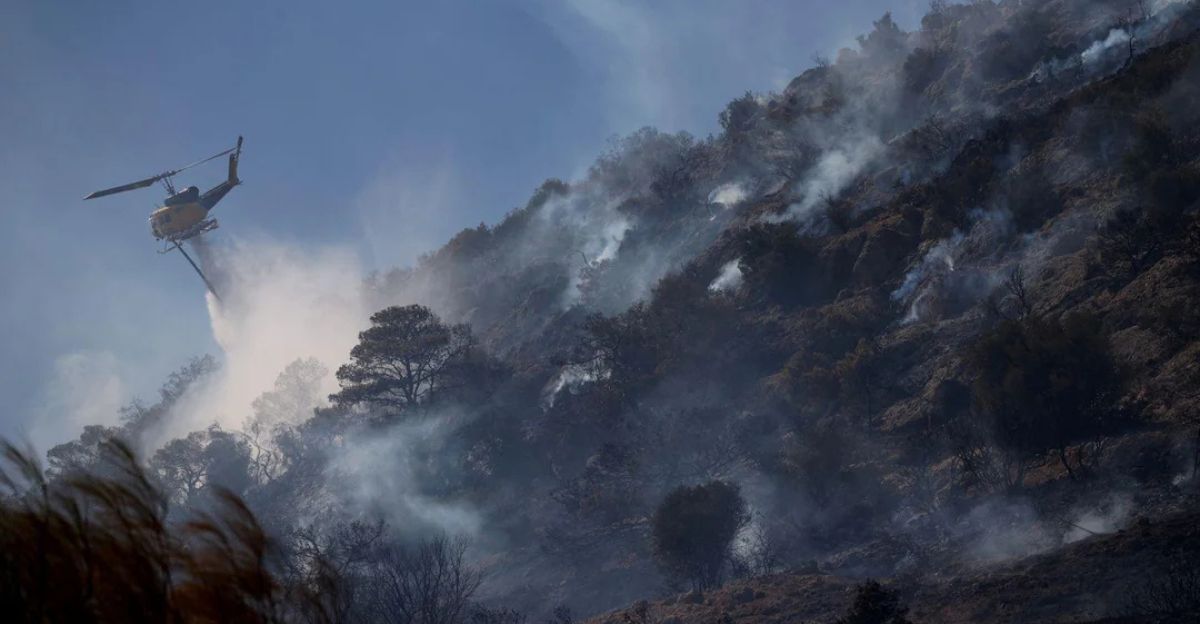
Fighting this enormous fire cam is no small feat. Over 400 firefighters battled the blaze around the clock, supported by dozens of fire engines, helicopters, and water-dropping planes. Local volunteers and military units joined the effort, forming firebreaks and assisting with evacuations.
Authorities coordinated with international partners, receiving additional support from neighboring countries as the crisis escalated. Medical teams were on standby to treat cases of smoke inhalation and heat exhaustion, while rescue crews worked tirelessly to reach isolated communities.
Communication Breakdowns and Chaos

Residents and tourists reported losing electricity throughout the night, which disrupted mobile networks and left many unable to receive emergency alerts or contact loved ones. The lack of reliable information in several areas fueled confusion and panic, with evacuees struggling to determine safe routes or locate family members amid thick smoke and blocked roads.
Without communication, fear and confusion spread even faster than before. “We had no electricity throughout the night,” said Deputy Governor of Lasithi, Yiannis Androulakis. “In most areas, we didn’t even have a mobile signal.”
The Fire’s Relentless Spread
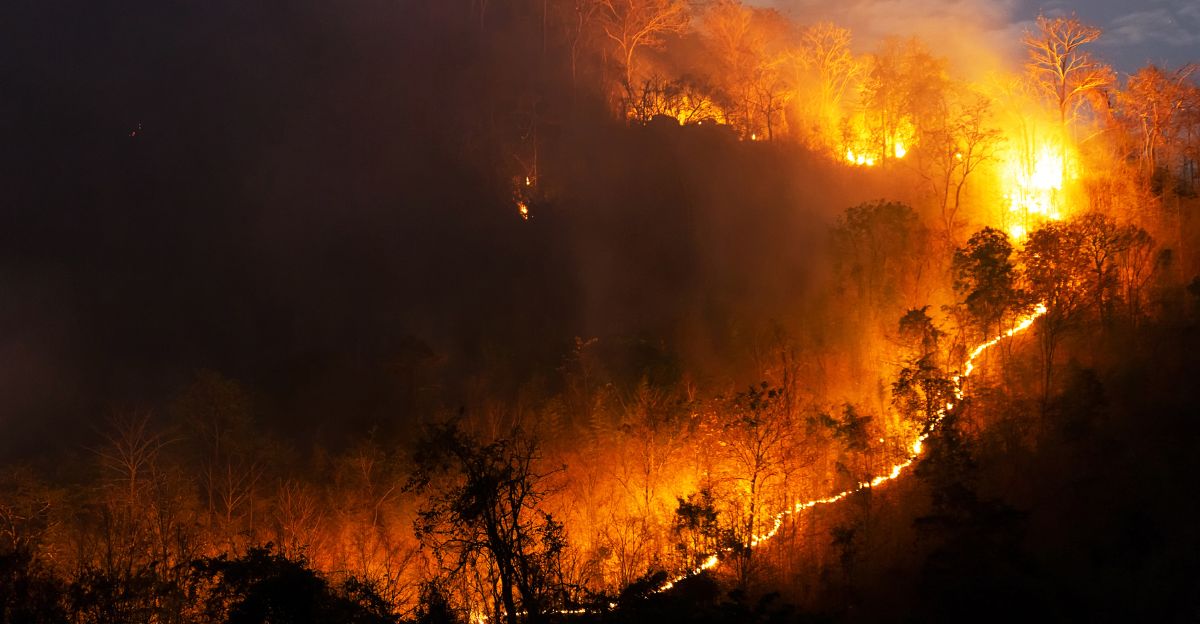
Igniting near the village of Achlia on Wednesday afternoon, the flames quickly split into multiple fronts, surging through forests, olive groves, and agricultural land, and leaving a trail of scorched homes, dead livestock, and blackened farmhouses in their wake. Within hours, the fire front stretched over 3.7 miles and only worsened.
Emergency crews faced constant setbacks as new outbreaks erupted from smoldering trees, making containment efforts nearly impossible. Despite a massive mobilization of firefighters, vehicles, and aircraft, the combination of extreme weather and challenging terrain allowed the inferno to consume vast swathes of southeastern Crete before any signs of retreat appeared.
Hotels and Homes Abandoned

Once bustling with happiness and laughter, the buildings were silent and had creaking floors. Emergency evacuation orders forced thousands of tourists, hotel staff, and residents to flee immediately, leaving behind luggage, personal belongings, and memories of summer holidays abruptly cut short.
In popular resort areas like Ferma, Agia Fotia, and Koutsounari, flames swept through hillsides and edged dangerously close to beachfront properties. The devastation was visible in scorched buildings and damaged homes, with clouds of ash and the glow of emergency vehicles.
Animal and Environmental Losses
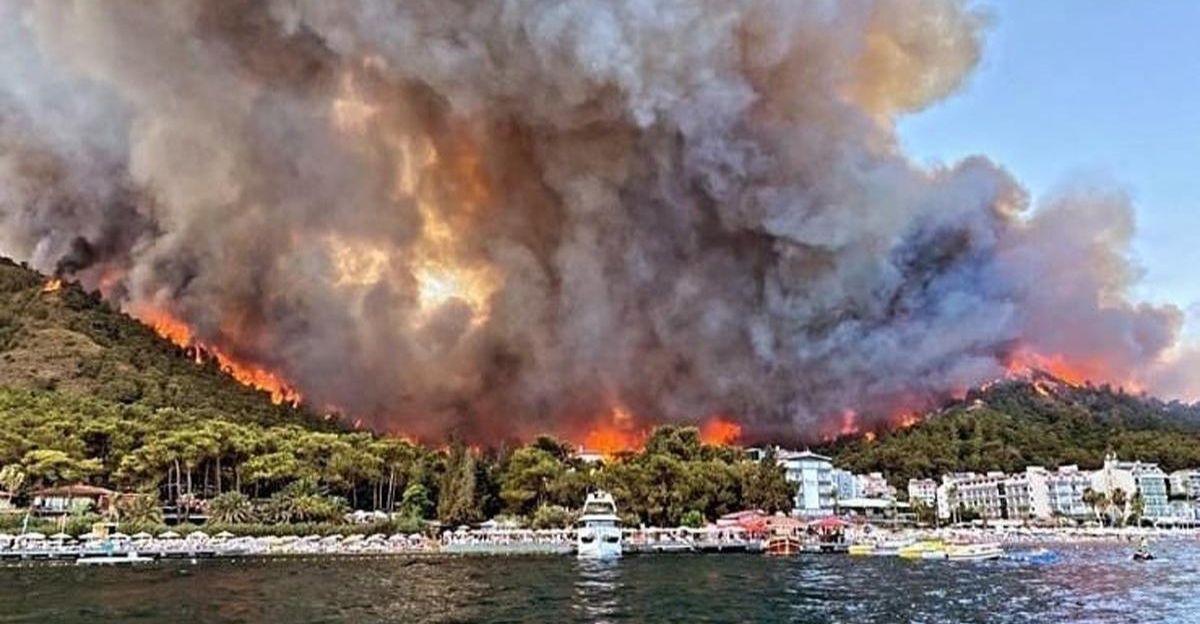
Crete’s natural environment and animal life took the biggest knock during these wildfires. Vast stretches of forests, olive groves, and agricultural land were reduced to ash, stripping the landscape of vital habitats for countless species. Volunteers and farmers discovered dead livestock, including sheep and goats, some of which perished while trapped in sheds as the flames swept through rural communities.
Wild animals faced equally dire consequences, with many unable to escape the fast-moving fire fronts. The destruction of nesting sites, food sources, and shelter threatens local biodiversity, particularly in an ecosystem already stressed by recurring droughts and heat waves.
Impact on Greece’s Tourism Industry
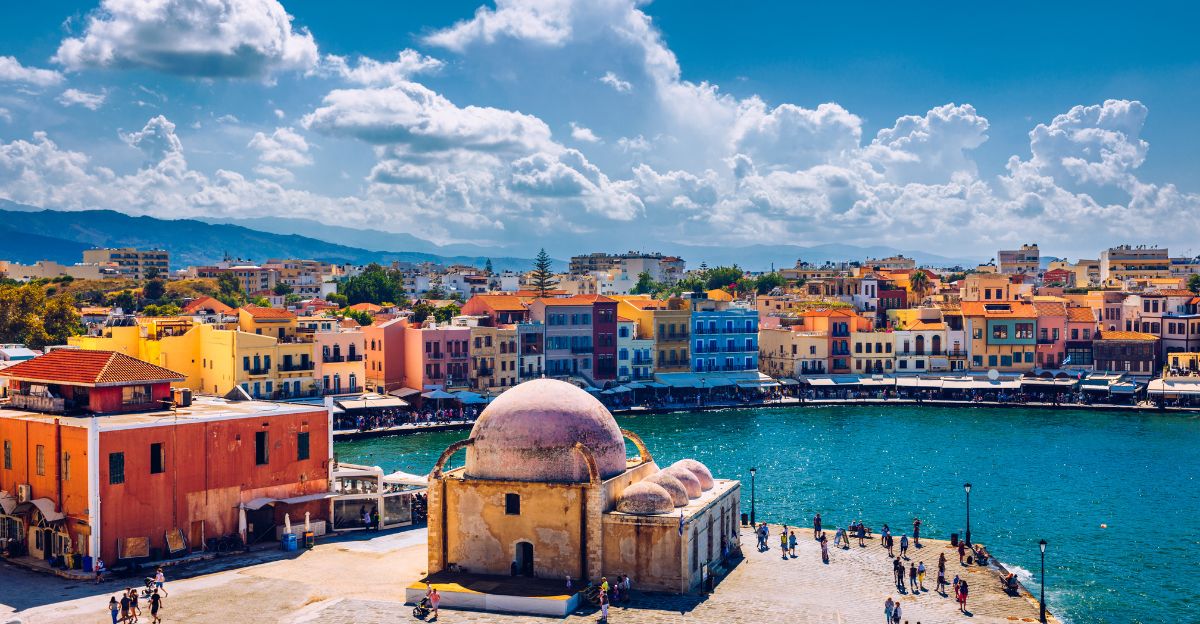
Hotels and rental accommodations were emptied overnight, leaving travelers stranded and prompting many to cut their holidays short or seek alternative destinations. The chaos has strained the livelihoods of hoteliers, restaurant owners, and small shops that rely on summer tourism.
The visible scenes of devastation and ongoing emergency have also led to a wave of booking cancellations, raising concerns about the long-term perception of Greece’s safety and reliability as a travel destination. As climate-related disasters become more frequent, the tourism sector faces mounting pressure to adapt to these changes.
The Way Forward
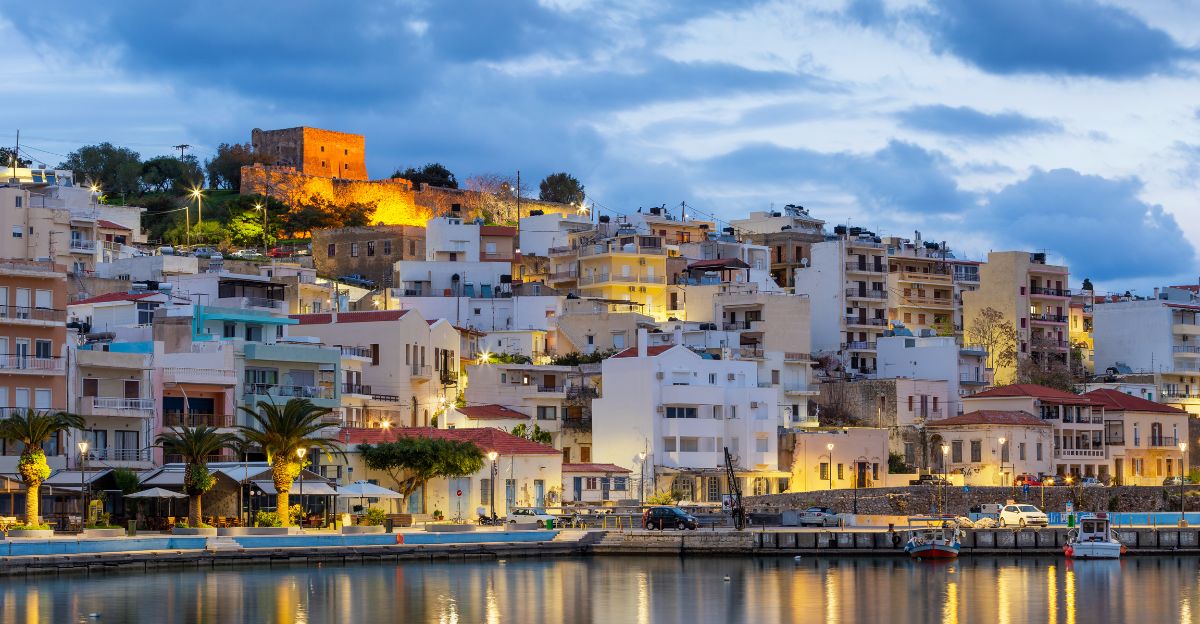
Local authorities and humanitarian organizations have begun assessing the extent of the damage, prioritizing support for displaced families, restoring essential infrastructure, and reviving the island’s battered tourism sector. Environmental agencies are also mobilizing to rehabilitate scorched landscapes, replant forests, and protect vulnerable wildlife habitats.
The crisis has sparked urgent conversations about investing in fire prevention, early warning systems, and climate adaptation strategies to strengthen resilience against future disasters. The road might be long, but there’s hope in the future and restoration of this magical place for generations to come.







